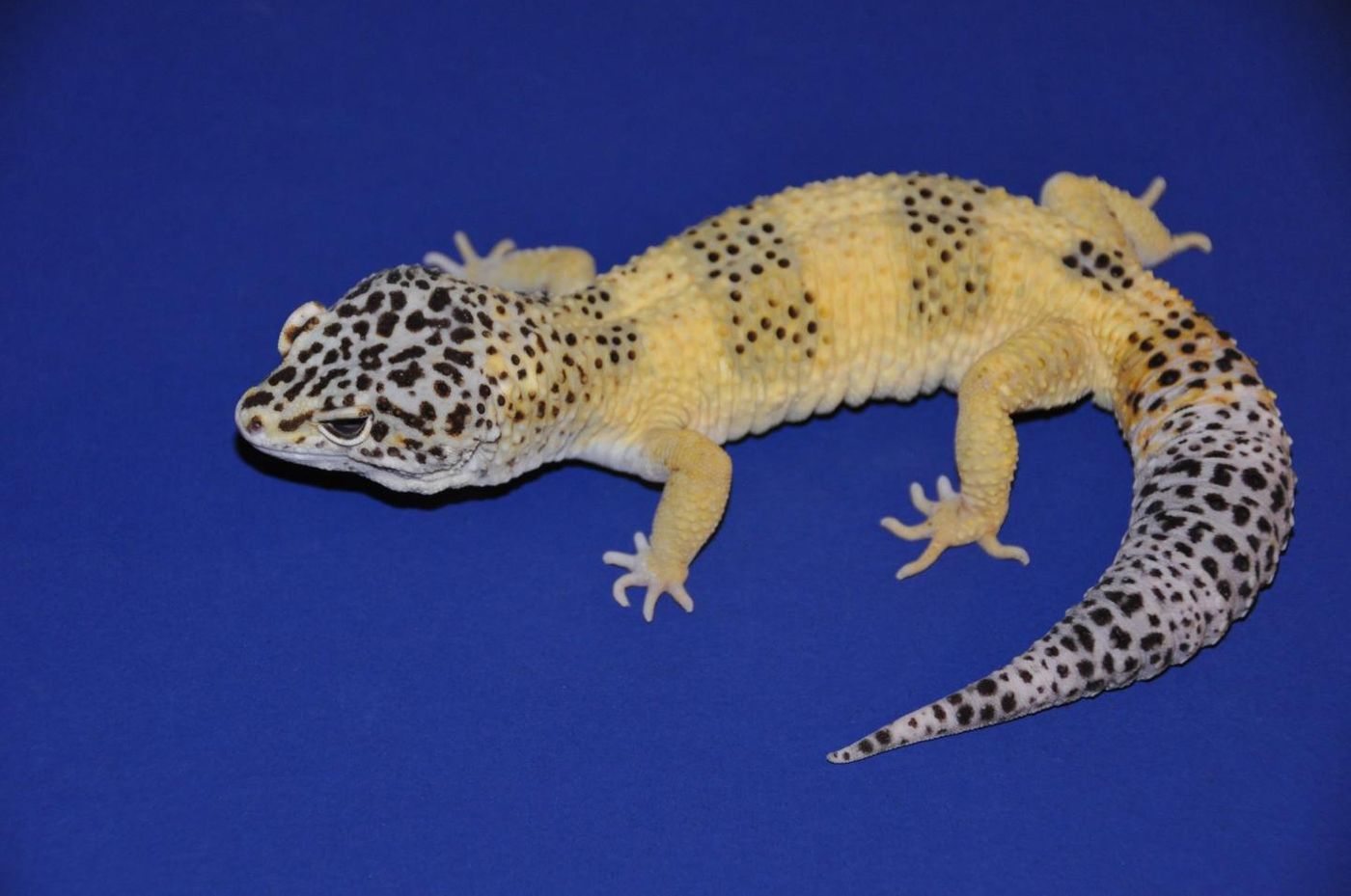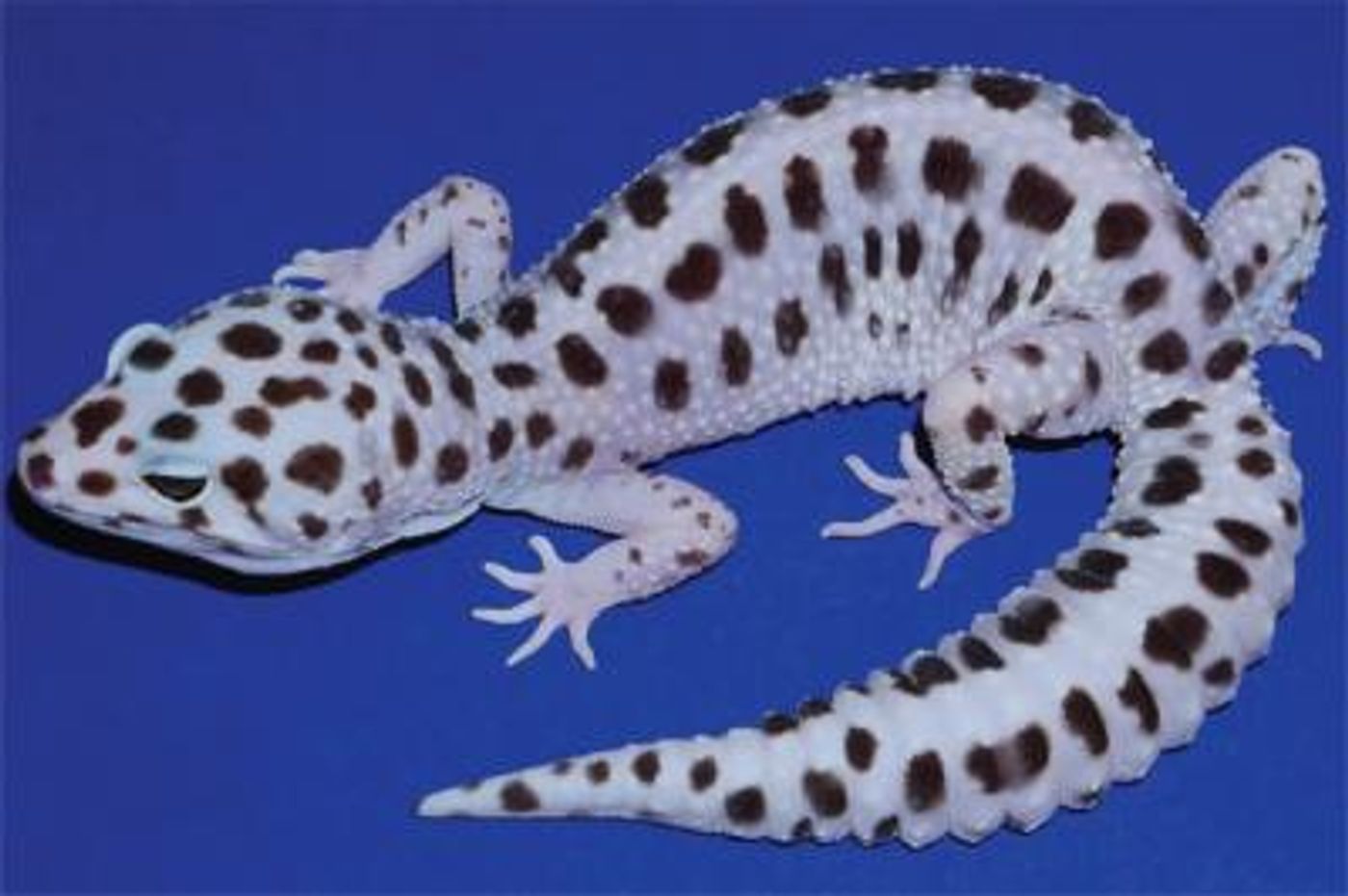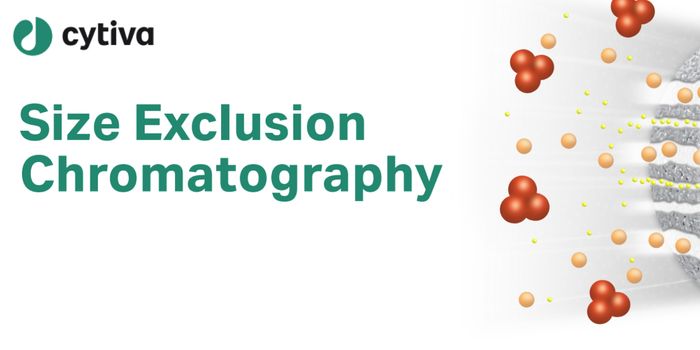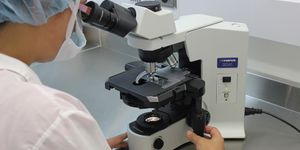How Colorful Geckos Can Teach Us About Biology
Some leopard geckos have gotten a lot of attention for their unusual characteristics, like Mr. Frosty (seen below), who has yellow spots on his back and some very white skin. A pet shop started breeding Mr. Frosty in 2016, and the colony of yellow-highlighted lizards that were produced were named Lemon Frost. These geckos are rare and can cost $2,000 or more. Most of them, about 80 percent, also develop large skin tumors within about five years of age. These large tumors can impair the animals' mobility and can get infected if they rupture.
Howard Hughes Medical Institute Investigator Leonid Kruglyak, a geneticist at the University of California, Los Angeles (UCLA) saw the striking pattern of these geckos and thought it was related to the tumors.
"It seemed likely that the same thing that was giving the geckos such unusual coloration was also causing the tumors," said Kruglyak. His team has now traced the geckos' rare features to one gene, which has already been linked to a deadly human skin cancer called cutaneous melanomas. These findings have been reported in PLOS Genetics.
Leopard geckos can be found with a variety of different colorations, which has given them names like Black Night, Sunburst Tangerine, and Granite Snow. UCLA postdoctoral fellow Longhua Guo, Ph.D. was captivated when he first saw them online. "The images immediately jumped out at me. These animals have so many fascinating colors and patterns," Guo said.
But scientists haven't delved much into the world of reptile genetics. "We have a very limited understanding of how the animals display this amazing variety of colors," Kruglyak said. The leopard gecko genome hasn't been carefully sequenced yet.
Guo and Kruglyak wanted to determine what genes gave rise to which colors. But they would need gecko DNA for that project. Guo was able to connect with Steve Sykes, a reptile breeder who has kept careful records of how his hundreds of geckos have been bred. Sykes agreed to collaborate with the researchers. "It was a very lucky moment in my life," noted Guo.
Cells called iridophores give many animals their striking colors. The pigment in these cells is different from the melanin in human cells; it produces colors with crystal structures that bend and reflect light in a wide range of colors. In leopard geckos, the arrangement of the crystals creates white color.
The researchers sequenced DNA from 500 lizards and began to look for links between colors and genes. While the lab doesn't typically study lizards, they do investigate the genetic basis of traits. They were able to trace the Lemon Frost color pattern to a place in the lizard genome where there one protein-coding gene, called SPINT1, was located. SPINT1 has been linked to tumor growth in zebrafish, mice, and humans.
That makes it seem like an obvious candidate for the cause of the Lemon Frost tumors, suggested Kruglyak. Mutations in this gene might increase the production of white skin cells, which may give the geckos their coloration but also tumors.
Guo is planning on continuing to investigate the links between lizard colors and their genes. The work may be relevant to human health in unexpected ways.
Sources: AAAS/Eurekalert! via Howard Hughes Medical Institute, PLOS Genetics










